Owing in part to its legacy as a producer of advanced camcorders, Panasonic has long been regarded as primarily a video-centric brand rather than a manufacturer of stills-oriented products, even though, realistically speaking, its mirrorless cameras are perfectly capable of both.
With the announcement of the new flagship Lumix G9, Panasonic aims to reach a new audience of stills photographers by focusing on features that can be useful for stills such as high burst speeds, improved stabilisation, and a high resolution mode to name a few.
Sitting a notch below the G9 is the G85 (otherwise known as the G80 in Europe or G8 in Asia). Although saturated with useful features for stills and video, it isn’t quite as advanced as the new model.
In this article, we’re going to be investigating the main differences between these two Lumix cameras and hopefully help you figure out which is better for your needs, be they stills or video oriented, or a little bit of both!
Ethics statement: The information supplied in this article is based upon official specifications, an excellent interview with Panasonic by Three Blind Men and an Elephant Productions, and our personal experience with Lumix cameras. We were not asked to write anything about these cameras, nor were we provided with any sort of compensation. Within the article, there are affiliate links. If you decided to buy something after clicking the link, we will receive a small commission. To know more about our ethics, you can visit our full disclosure page. Thank you!
1. Sensor and High Resolution mode
Let’s start with the sensor since this is where one of the biggest differences can be found.
The new G9 houses the same 20MP Live MOS Micro Four Thirds sensor as the flagship GH5. It works in tandem with the Venus Engine 10 to deliver better colour accuracy, detail, contrast, dynamic range and high ISO performance than previous sensors. Panasonic even suggests that the JPG image output of the G9 outdoes that of the GH5 due to software improvements.
The G85’s 16MP Live MOS Micro Four Thirds sensor is identical to that used for previous models in the Lumix range, and also uses an older version of the Venus Engine processor.
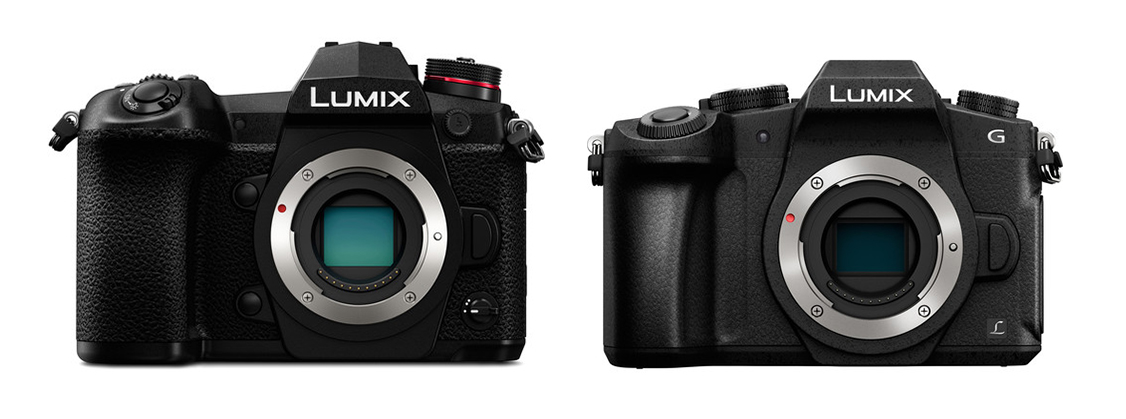
Both sensors lack an optical low-pass filter, allowing for increased resolution but also making the sensor more vulnerable to moiré.
The G9 also boasts an exclusive feature called High Resolution mode. It takes 8 images in a row, separated by a half pixel between shots, and composites them in-camera to create a high resolution image with a maximum of 80MP. (Note that the resolution varies depending on the aspect ratio used.) Because this feature relies on the revamped stabilisation system of the G9 which we’ll discuss later on, it is unlikely we’ll see it come to the G85 via firmware.
2. Continuous shooting and maximum shutter speeds
The fast continuous shooting speeds are a star feature of the new G9. With the mechanical shutter, it can reach 12fps in S-AF or 9fps in C-AF but switching over to the electronic shutter raises these speeds to an impressive 20fps in S-AF or 60fps in S-AF. Rolling shutter should also be very well contained.
These speeds, combined with the electronic shutter, paved the way for new feature called Pre-Burst which records approximately 15 full-sized RAW and JPG images before the shutter release button has been fully depressed. In other words, this mode makes it possible to capture fleeting moments you might otherwise miss.
As for the G85, it can shoot at a much more modest speed of 9fps in S-AF mode or 6fps in C-AF and doesn’t include the Pre-Burst mode. There is a 40fps mode with the electronic shutter but it is limited to JPGs and 3MP of resolution.

The buffer capabilities are a little better on the G9 (50 vs 45 RAW frames in a burst), as is the maximum mechanical shutter speed (1/8000 vs 1/4000) and electronic shutter speed (1/16000 vs 1/32,000).
3. Autofocus system
All recent Lumix cameras use Panasonic’s Depth from Defocus (DFD) technology, a contrast detection autofocus system that calculates the distance to the subject by evaluating two images with different depths of field.
The G85 features the first generation DFD system which is less advanced than the second generation DFD system of the G9. The former comes with 49 AF points and a 240fps sensor drive whereas the latter has 225 AF points and a 480fps drive speed. The lock-on speed of the G9 is also faster at 0.04s.
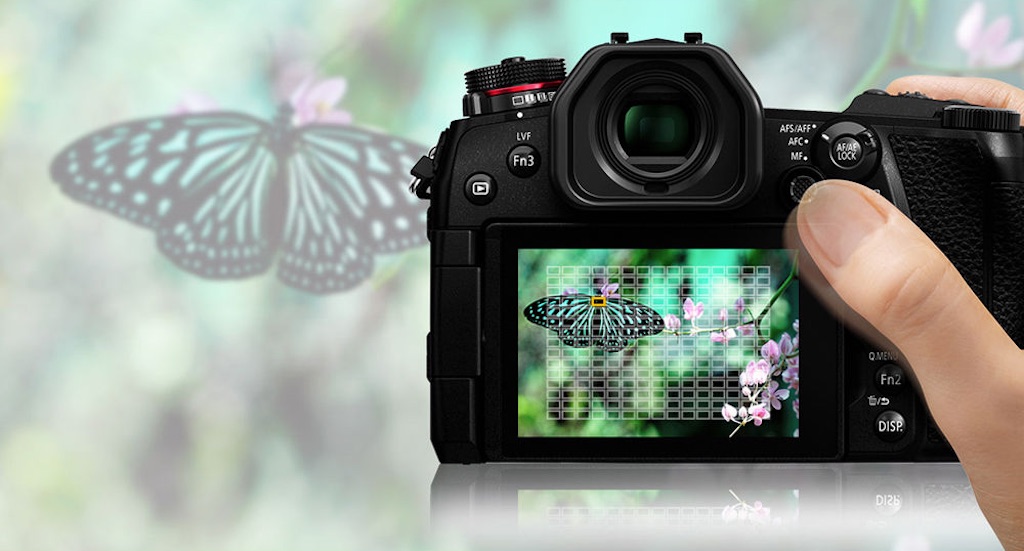
Other new features include the motion tracking vector called Deep Learning that looks for bodies in addition to the eyes and face, as well as a feature called Autofocus Point Scope which magnifies the image up to 10x so that you can check the focus of your subject with accuracy.
Finally, the G9 features the same set of customised AF settings found on the GH5, which are as follows: AF Sensitivity, AF Area Switching Sensitivity and Moving Object Prediction.
4. Build and design
The first difference concerns the size and weight of the two cameras. While the G9 weighs 658g with the battery and memory card, the G85 is approximately 150g lighter and is also physically smaller than its high-end sibling (128.4 x 89 x 74.3mm vs. 136.9 x 97.3 x 91.6 mm). Much of this extra weight is due to the redesigned grip of the G9, which is now deeper and sits more comfortably in your hand.
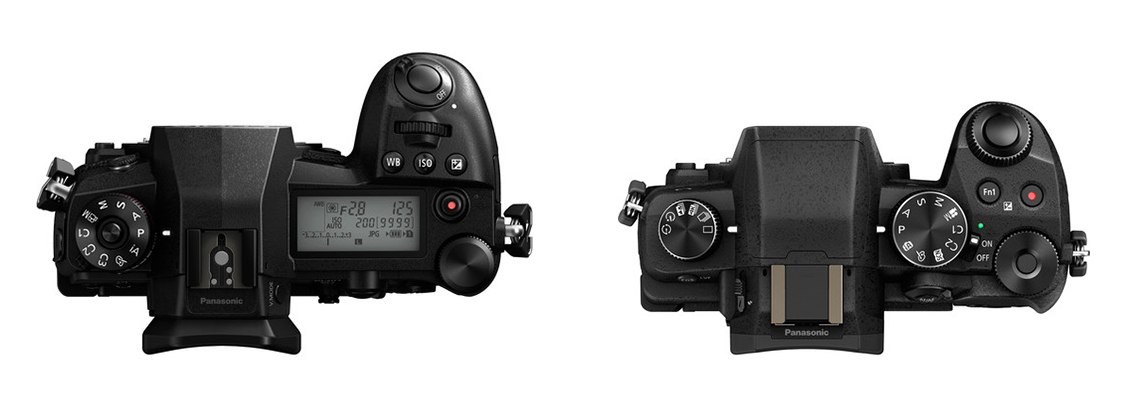
The extra surface area of the G9 makes room for some additional controls, such as an AF joystick, dual SD card slot (both UHS-II compatible versus the single UHS-II slot of the G85), function lever that lets you switch between two customisable shooting mode, stacked mode/drive dial, and additional customisable function buttons scattered around the body.
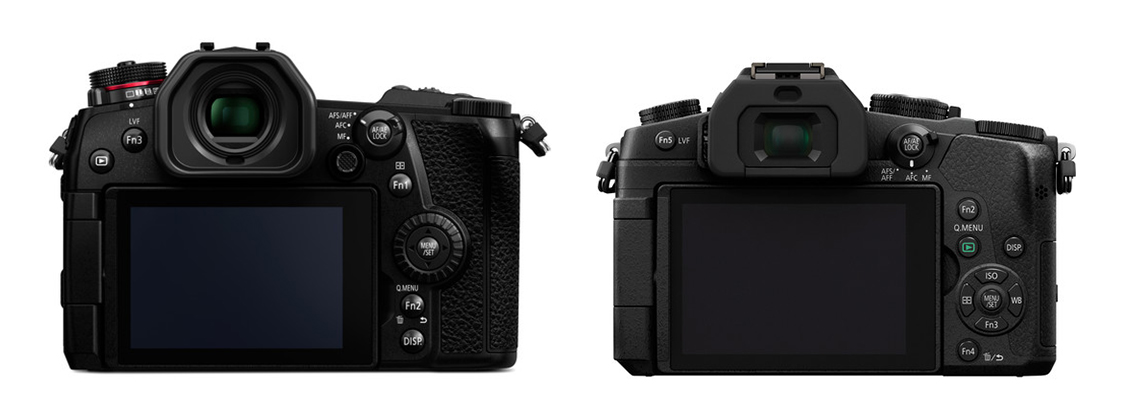
The G85 does have one advantage, however, and that is the built-in pop-up flash. To use flash on the G9, the only option is to buy one separately.
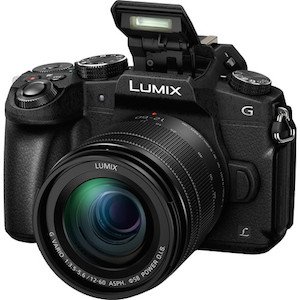
5. Electronic viewfinder and monitors
I could have tied the topic of electronic viewfinders and monitors into the design section but so big are the upgrades that we figured they deserved their own place in the spotlight!
The G9 boasts a stunning OLED Live finder with 3,680k dots of resolution and an impressive magnification of 0.83x, making it the largest viewfinder in its class.
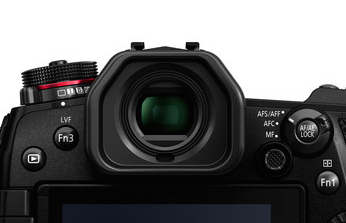
Interestingly though, Panasonic gives you the option to switch to lower magnifications (either 0.77x or 0.7x) via a View Mode button on the side of the EVF. Doing so makes it easier to see the corners of the frame, especially if you wear glasses.
The G85 also features an OLED viewfinder but it has a smaller magnification of 0.74x and less resolution (2,360k dots). When reviewing the camera, we found the viewfinder very fluid and comfortable to use, which suggests that the G9’s should be even better.
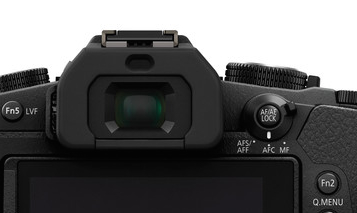
You can choose between EVF frame rates of 60fps or 120fps on the G9 whereas the G85 is capped at 60fps.
While the rear LCD screens are identical (3-inch free-angle types with static touch control, a 4:3 aspect ratio and 1040k dots), only the G9 has a top monochrome backlit LCD, a feature commonly seen on high-end DSLRs. It provides a quick glance at many useful settings such as the shooting mode you’re in or the battery life of the camera and/or batter grip.
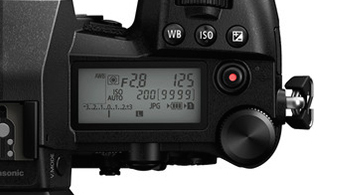
6. Dual I.S. 2 stabilisation
Both cameras feature the latest iteration of Panasonic’s stabilisation system dubbed Dual I.S. 2. It combines 5 axes on the sensor with the 2 axes of optically stabilised (O.I.S.) lenses to provide up to 5 stops of image stabilisation correction on the G85 and a whopping 6.5 stops on the new G9 all the way out to 280mm (35mm equivalent). According to Panasonic, this level of compensation is maintained even when using non-stabilised lenses at short focal lengths.
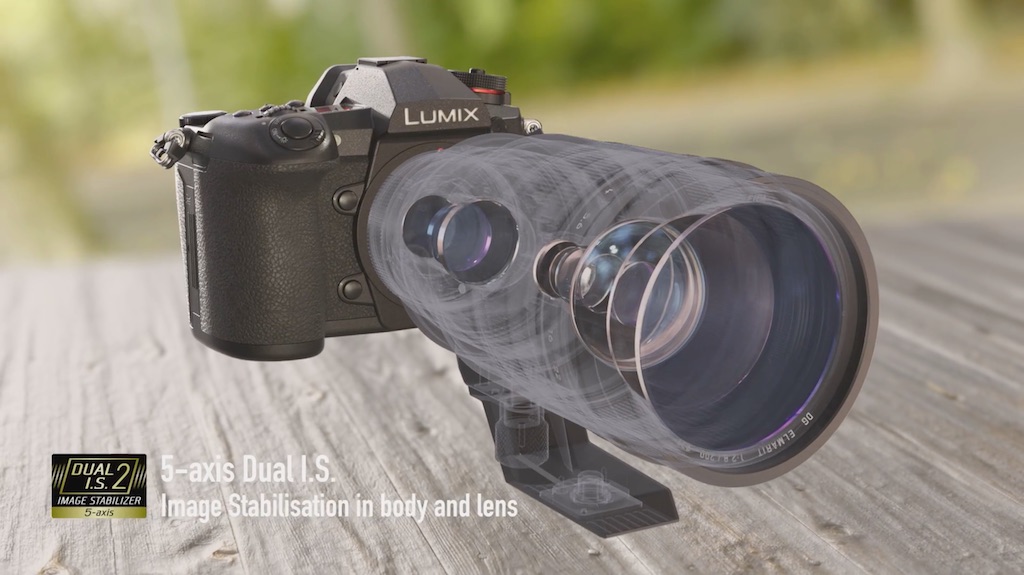
At the moment, Dual I.S. 2 is only compatible with a select range of O.I.S. lenses within Panasonic’s line-up but support should come to more lenses via firmware update in the future, not to mention that a number of Dual I.S. 1 lenses such as the Lumix 12-35mm and 35-100mm have received a physical upgrade to Dual I.S. 2.
7. Video specifications
The G9 was conceived with stills photographers in mind but that certainly doesn’t mean that Panasonic has skimped on the video specifications. Specifically, it can record 4K up to 30p and 100Mbps, and 50/60fps and 150Mbps (10 minutes maximum). In Full HD, the maximum frame rate is 180fps, giving you excellent slow motion footage.
The G85, on the other hand, can record in 4K but the maximum frame rate is capped at 30fps with a 100Mbps bitrate. The maximum frame rate and bitrate in Full HD is 60fps and 28Mbps respectively.
Neither camera has the Log gamma curve of the GH5 but they do retain the Cine-Like D and Cine-Like V video profiles. For internal recording, both have 4:2:0 8-bit compression but can record 4:2:2 8-bit to an external recorder via the HDMI output which is full-sized on the G9 and HDMI micro on the G85.
The two cameras support full pixel readout in 4K video mode but the G85 crops the sensor slightly in order to do so. Because the G9 doesn’t perform any cropping, you can keep the native field of view of your MFT lenses.
Finally, if you want audio, you will find a 3.5mm microphone input on both cameras but only the G9 has a headphone output.
8. 4K vs. 6K Photo
The G9 has the latest 6K PHOTO mode in addition to 4K PHOTO, meaning that it can save 8MP stills from 4K footage up to 60fps or 18MP stills from 6K footage up to 30fps. Both modes use the HEVC (H.265) codec with better compression.
The new camera also brings improvements to these modes such as noise reduction at higher ISOs and rolling shutter correction without altering the angle of view by using multiple frames to analyse and compose the final picture.
The G85’s video specifications top out at 4K up to 30fps, so you can only extract 8MP stills.
9. Battery life
The G9, being the more power-hungry of the two cameras, takes the larger DMW-BLF19E battery whereas the G85 uses the smaller DMW-BLC12 battery. According to CIPA standards, the former can manage approximately 400 images with the monitor or 380 images with the EVF, while the latter is capable of taking 330 images and 320 images respectively. Activate Panasonic’s new power-saving LVF shooting mode on the G9, however, and the number of shots per charge skyrockets up to 890. (These figures obviously vary depending on the weather conditions, how intensively you use the camera, and so on.)
Furthermore, the G9 supports in-camera charging via USB 3.0 and can be powered while the camera is in operation. This means that you can simply plug the camera into a power source and use it for long video recording sessions without worrying about the battery life. The G85’s battery, by contrast, can only be charged via a dedicated battery charger, so you need to make sure to have at least a few charged batteries on hand at any given time.
The battery life of both models can be extended via a dedicated battery grip (DMW-BGG9 for the G9 / DMW-BGG1 for the G85).
10. Extra features
Let’s conclude this round-up of differences by looking at the extra features the G9 has in comparison to the G85.
Although both cameras have WiFi capabilities that let you remotely control the camera or transfer images to a mobile device, only the G9 benefits from Bluetooth which maintains constant connection with your phone or tablet while using the camera.
The G9 has also inherited the redesigned menu system of the GH5, giving it a more professional appearance and increasing the number of items per page from five (on the G85) to eight.
Another interesting feature of the G9 is called Night mode which prevents the brightness of the LCD screen from ruining your night vision when working in low light conditions. It does this by deactivating the green and blue channels, leaving you with a plain black and red screen.
As for the features they share, you’ll find time-lapse, stop motion animation, panorama, various bracketing modes including focus bracket, and options related to 4K and 6K PHOTO such as Post Focus and Live Composition.
Conclusion
The final difference is likely the one that will have the greatest impact on your decision, which is why we’ve saved it for the conclusion. This is, of course, the price.
The Lumix G9 body hit the market with a retail price of $1699 / £1,499 / €1,729, which is still lower than the GH5 but around $700 more than the G85 with the 12-60mm f/3.5-5.6 kit lens included in the US. Granted, the G9 offers much more in terms of speed and extra features such as the new High Resolution mode and Pre-Burst but if action, wildlife and still life aren’t your main genres of interest, you may find that the G85 – which remains a very capable camera for both stills and video – is more than enough to meet your needs.
Check price of the Lumix G9 on
Check price of the Lumix G85 / G80 on
Amazon | Amazon UK | B&H Photo | eBay
Used Panasonic cameras on


